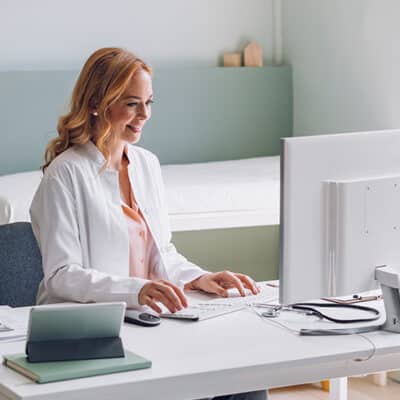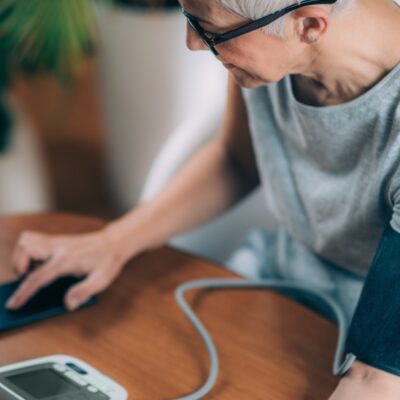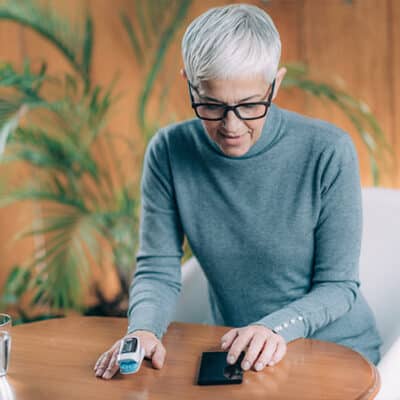The Practice:
Barry J. Liberoni, M.D., P.A.
Dr. Liberoni’s internal medicine is a midsized medical practice located in South Texas. The practice has a multidisciplinary care team specializing in the comprehensive management of chronic health conditions such as diabetes, hypertension, hypercholesterolemia, obesity, and chronic obstructive pulmonary diseases (COPD). The majority of the practice’s patients over the age of 40 have multiple chronic conditions.
The Challenge:
Find a simple, easy-to-use solution that will enable their practice to remotely manage their patients’ chronic conditions while improving overall experience and health outcomes.
Dr. Liberoni’s practice had some of the same challenges common in many medical practices today— treating a growing senior population with multiple chronic conditions and barriers to care. Some of these barriers included a lack of access to broadband internet and a lack of technology in the home to conduct telemedicine visits. Similarly, many patients had difficulties coming in for regular checkups due to distance or transportation issues. These patients were often sicker than most and needed more frequent visits and follow-up care to help manage their health.
“If our patients’ chronic conditions go unmanaged, it could result in potentially catastrophic outcomes.”
— Dr. Liberoni
The Solution:
Choose the right remote patient monitoring solution.
To solve these challenges, the practice turned to remote patient monitoring. They were looking to provide their patients with easy-to-use, at-home digital tools, including a scale, blood glucose monitor, and automated blood pressure cuff to help remotely monitor their patient’s vital signs while managing their chronic conditions. Dr. Liberoni and his care team also wanted a solution that did not require the patients to have an internet connection, download an app, or learn complicated tech to use it.
Initially, the practice had difficulty finding a suitable solution and considered building one themselves. However, after some research, the team learned about the 100Plus RPM platform and chose the solution because it was easy to use for both patients and providers. Additionally, the 100Plus devices used cellular technology and did not require a complicated setup or an internet connection. Also, 100Plus assisted the practice with patient eligibility, enrollment, onboarding, and support. It was a no-brainer, and since they have enrolled over 1000 patients on the 100Plus remote patient monitoring platform.
Dr. Liberoni noted that the 100Plus RPM platform was his “eyes and boots in the house,” giving him a better understanding of how patients are doing on a daily basis— while they live their lives at home, in their natural environment.
With an overview of their patient’s day-to-day health, Dr. Liberoni and his practice have been able to deliver earlier interventions and often prevent the need for emergent care. Their care team has been able to engage with patients armed with health data and trends specific to each individual. The RPM platform has enabled the practice to facilitate more individualized, preventative, and proactive care that is focused on better health and outcomes.
More specifically, Dr. Liberoni shared that the email alerts and web interface for the 100Plus Provider Portal were intuitive and helpful. He noted, “It has given me the oversight I need to understand what’s going on with my patients’ conditions while they are at home.”
The Results:
The benefits of the 100Plus RPM solution
Dr. Liberoni’s internal medicine practice has seen significant results for their patients enrolled in the 100Plus RPM program for >180 days, including:
- An average reduction in random blood glucose of 4.6 mg/dl for patients with diabetes.
- An average diastolic blood pressure reduction of 7.9 mmHg for patients with starting BP >140.
- An average systolic blood pressure reduction of 17.1 mmHg for patients with starting BP > 140.
“The 100Plus remote patient monitoring platform has enabled our providers and staff to monitor our patient’s health by providing informative health data virtually,” said Dr. Liberoni. “This data can be used to help us make more informed clinical decisions throughout our patients’ course of care.”
Patient Cases:
More specifically, one of Dr. Liberoni’s RPM patients had changes made to their medication by the rheumatologist, which affected the patient’s blood pressure and caused a hypertensive crisis. Dr. Liberoni received a notification that this patient’s blood pressure was out of the normal range, and he reached out to the patient by phone to have them come into the office for a follow-up appointment and to adjust the medications. This intervention likely reduced a potential adverse event.
Similarly, Dr. Liberoni had another patient with an issue that caused the patient’s blood pressure to go out of the normal range, and they were able to identify this problem with RPM and adjust the patient’s medication, avoiding a potential adverse event.
Dr. Liberoni noted that all the technology works well together, and having the ability to provide more than one device to each patient has been a positive aspect of choosing this solution. He said his practice had very few patients who were using only one device — most of his patients used multiple devices.
In conclusion, Dr. Liberoni shared, “The 100Plus RPM platform has enabled our practice to better care for our at-risk patients, and that’s what matters most to our practice.”
Start The Path Toward Better Patient Care
Have questions about how remote patient monitoring for healthcare will work for you and your patients? Let’s have a conversation.
Access the Latest RPM News
Stay up to date with the latest news, articles and webinars about remote patient monitoring and telehealth.
"*" indicates required fields



